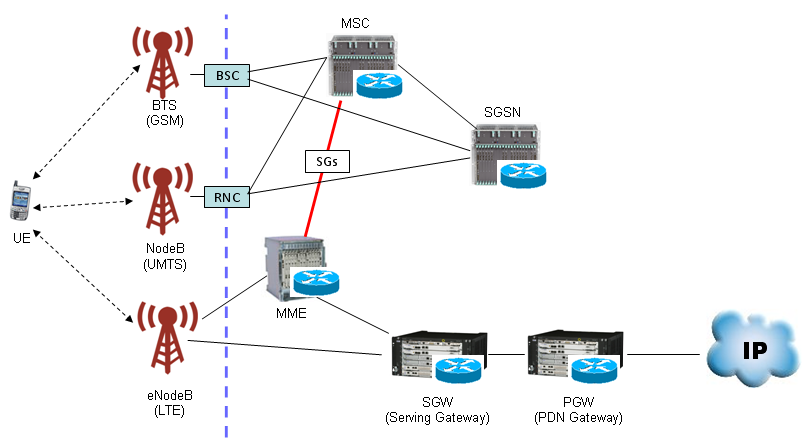|
4G/LTE - Core Network |
||
|
SAE (Service Architecture Evolved)
Simply put, SAE is just a terminology representing LTE network architecture. More simply put, SAE = LTE Network -:). If I represent it graphically, it looks as follows. You will find the various different type of SAE diagram from various source ranging from very simple to extremly complicated one. Following is a kind of simple presentation but it has almost everything of LTE component. The complicated diagram you would find from other source is just a combination of LTE network and other networks like UMTS, GSM etc.
Video Tutorials :
You can extend the LET SAE as follows to interface with other technology.
Now you'd better understand function of each node (block) in the diagram. The more you know about each of these blocks, the easier your troubleshooting, test case creation, test will be since the role of each of these nodes will be related to the information elements (IE) of RRC/NAS message. But here I would just put the brief summary of functions of each node and I leave it to you to dig into the details.
MME (Mobility Management Entity): Just remember this as the most important component of SAE which has following functionality. You can take MME as a center for all signaling message.
SGW (Serving Gateway) : Simply put, this is a center for all user data (packet data).
PGW (PDN Gateway)
HSS (Home Subscriber Server) : This is a central database that contains user-related and subscription-related information. It is like "HLR(WCDMA) + AuC(WCDMA) + Additional Information(LTE)"
|
||

